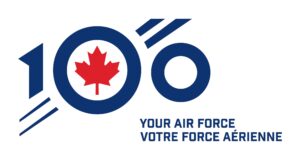
In April this year, the Royal Canadian Air Force (RCAF) reached its 100th birthday. Under the motto “Your Air Force”, this is celebrated throughout the year during all kinds of smaller and larger events all over Canada. But also in Europe attention was paid to this milestone.
At the Royal International Air Tattoo (RIAT), the large air show held from July 19-21 at RAF Fairford in the United Kingdom, a large delegation of the RCAF was present.
During the airshow, Lieutenant-General Eric Jean Kenny, Commander of the RCAF since 2022, and all other Canadian crew members present were given a birthday cake from RIAT. There was a large tent where the public could learn more about the RCAF and its rich heritage. And here they could also meet and photograph the official RCAF centennial mascot eagle Astra, that acts as a symbol of the Canadian heritage and commitment to excellence.
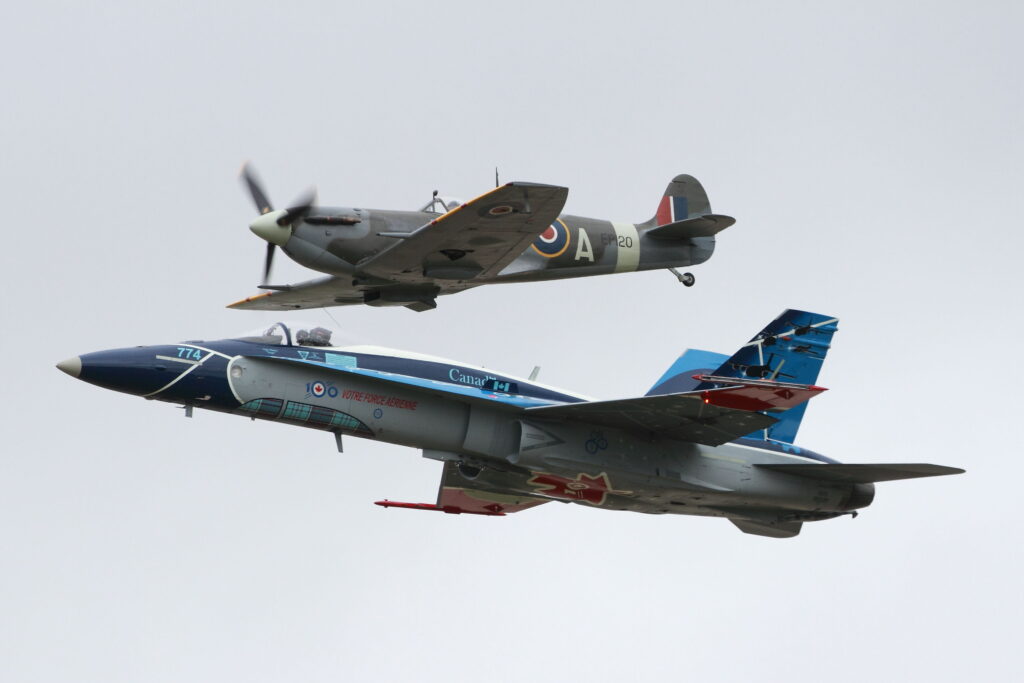
After giving a very spirited solo display, the CF-188 of the CF-18 Demonstration Team joined up with Spitfire EP120 that is painted in the markings of 402 (RCAF) squadron. As a Heritage Flight they performed three flypasts, giving the audience a good chance to admire both the old and new fighter. The Hornet is flown by Captain Caleb “Tango” Robert from 325 squadron at Bagotville and is painted in a special commemorative scheme especially for the centennial celebrations. The Spitfire is operated by The Fighter Collection at Duxford aerodrome in Cambridgeshire, home of the biggest number of warbirds in the United Kingdom.
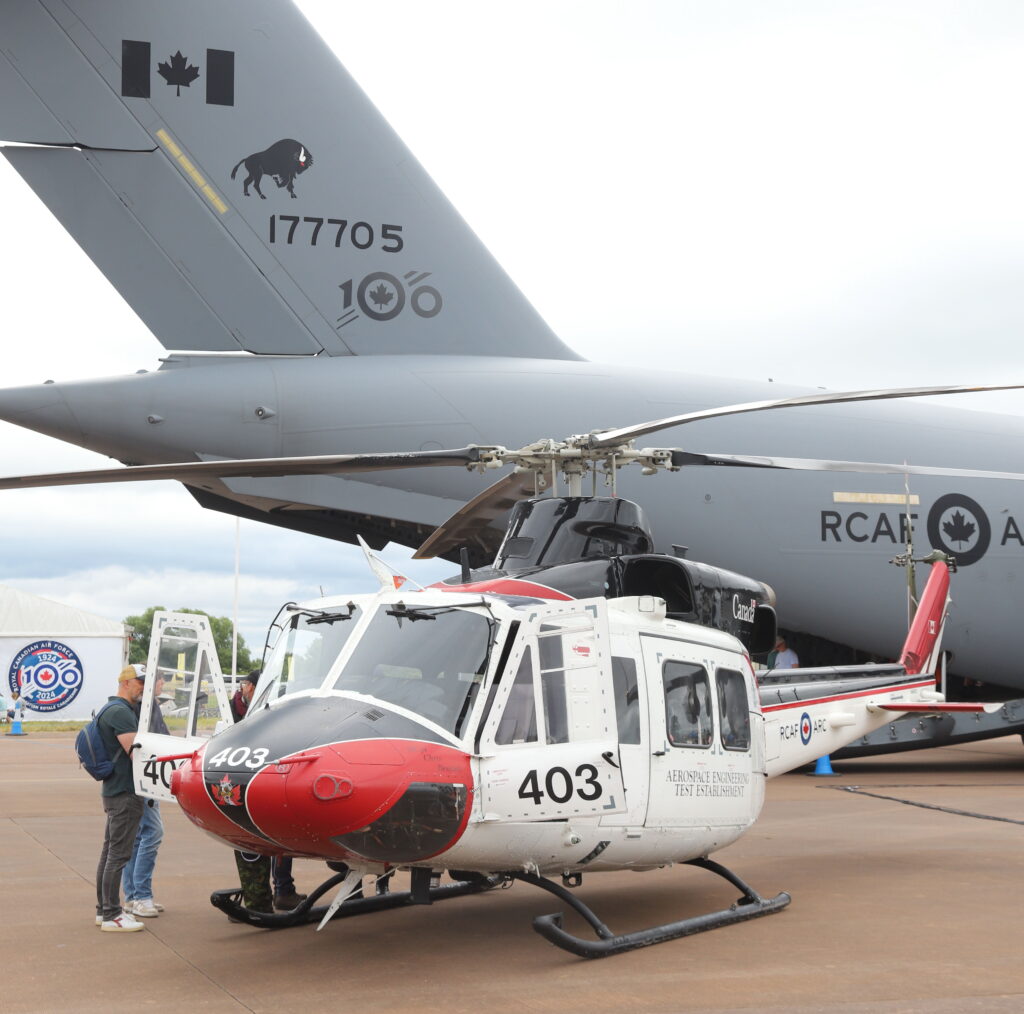
Star of the show for many was the sole CH-146 Griffon of the Aerospace Engineering Test Establishment (AETE). It is parked in front of the CC-177 Globemaster that transported it across the ocean, and which is adorned with special centennial markings on its tail. The Griffon is rarely, if ever, seen outside Canada, so its appearance at Fairford was very welcome. As mentioned it was flown to Europe in the belly of the CC-177, a flight of approximately 5,5 hours. Dismantling and reassembling the helicopter was done by members of 400 tactical helicopter squadron, taking some 4,5 and 3,5 hours respectively. Quite a lot of effort altogether, but it was certainly appreciated by a large part of the public at Fairford.
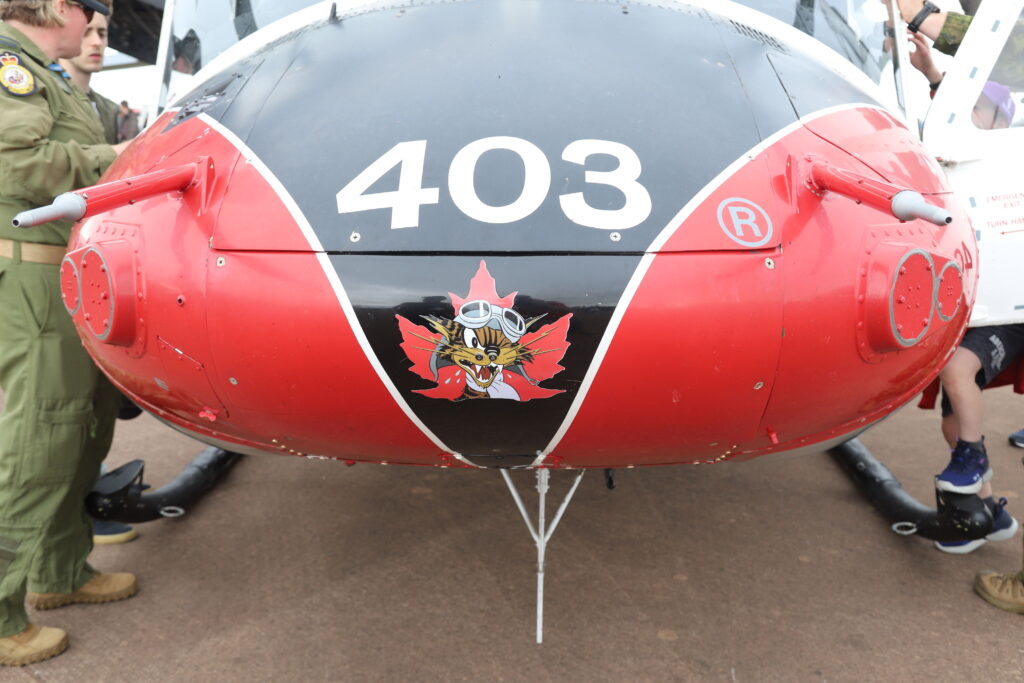
AETE recently moved from Comox to Ottawa International Airport, but as a new hangar is still being built for them, the Griffon is currently maintained and parked in the hangar of 438 squadron at Saint-Hubert. The markings of 438 squadron ‘Wildcats’ have therefor been applied to the nose of the aircraft as well, next to the recognisable colours of the AETE. The Griffon is mainly used by AETE for all kinds of transport, including passengers, VIPS and cargo.
Interesting sidenote is that currently the GLEP or Griffon Life Extension Programme is ongoing, during which the CH-146s receive amongst others new engines and a fully digital cockpit. This has given cause to debate whether a flight engineer is still needed in the future, as he or she is supposed to keep an eye on all limitations during flight, but the computers will do that in the future. Time will tell what will happen to the flight engineer therefor.
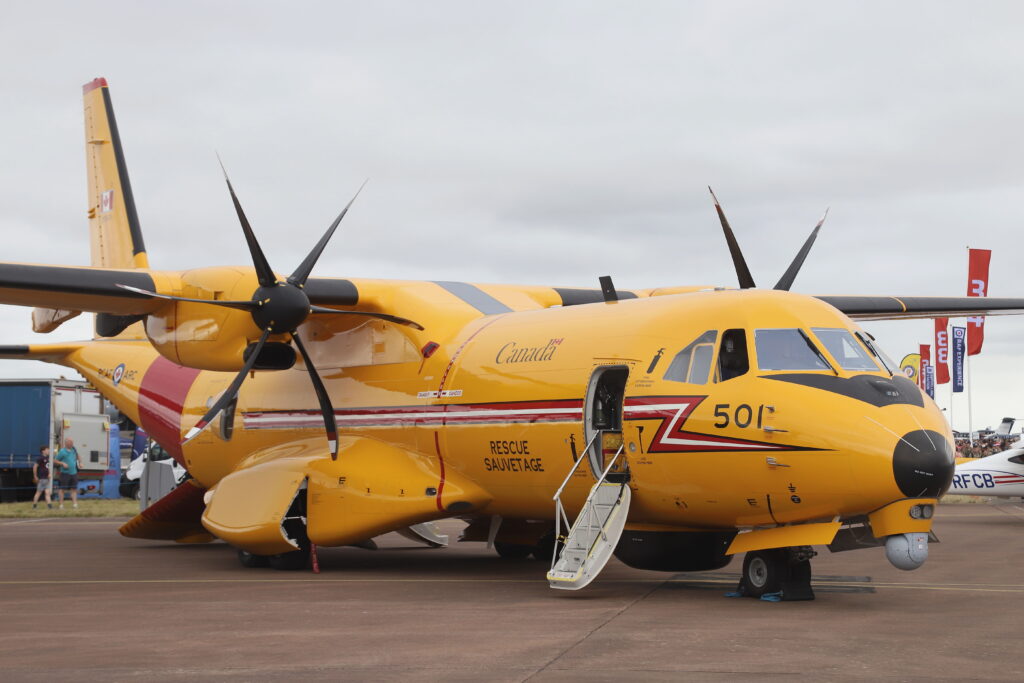
Not to be missed, if only because of the bright yellow colour scheme, was this CC-295 Kingfisher that formed part of the static show. The RCAF is currently working up 19 Wing at Comox to be the first operational wing with the CC-295 for search and rescue duties. They are intended to replace the CC-115 Buffalo, that used to form the fixed-wing part of the RCAF search and rescue fleet. As this was already retired in 2022, its tasks are currently temporarily performed by the CC-130H Hercules.
This aircraft probably travelled the longest distance to RAF Fairford, with a 7,5 hours flight from Comox to Iqauliet, followed by 5 hours to Reykjavik (Iceland) next day and finally another 5 hours to RAF Fairford in the UK on the third day. After the show the aircraft was flown to Seville in Spain, where it will be temporarily stored at the Airbus factory where it was built in the first place. When the current test and evaluation phase of the CC-295 is finished and 19 Wing will be operational, 14 Wing at Greenwood is the next in line to receive the Kingfisher. And then some of the stored aircraft at Seville will return to the skies again.
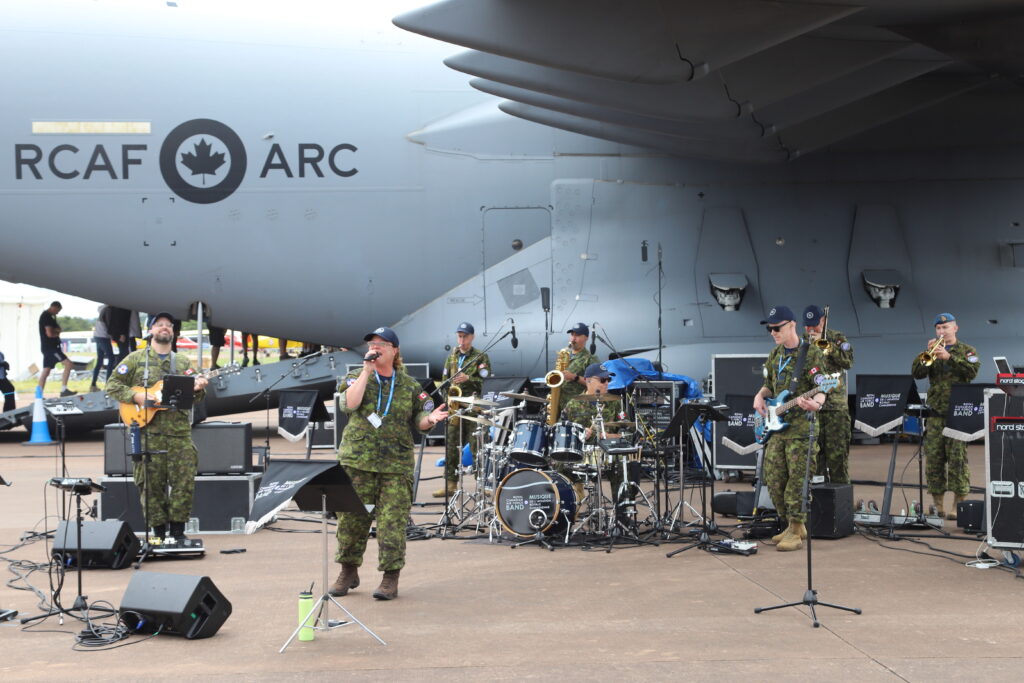
Adding to the atmosphere at RIAT was the Royal Canadian Air Force Band, performing multiple times a day. The band currently consists of 35 full-time professional musicians who mostly perform throughout Canada, but were also flown to the United Kingdom to participate in the celebrations. Its history goes back all the way to 1946, when No.2 Training Command decided it would be nice to have a professional marching band. Since then many name changes, mergers, expansions and such have happened, but the band still plays all kinds of contemporary music that the crowd could sing along with.
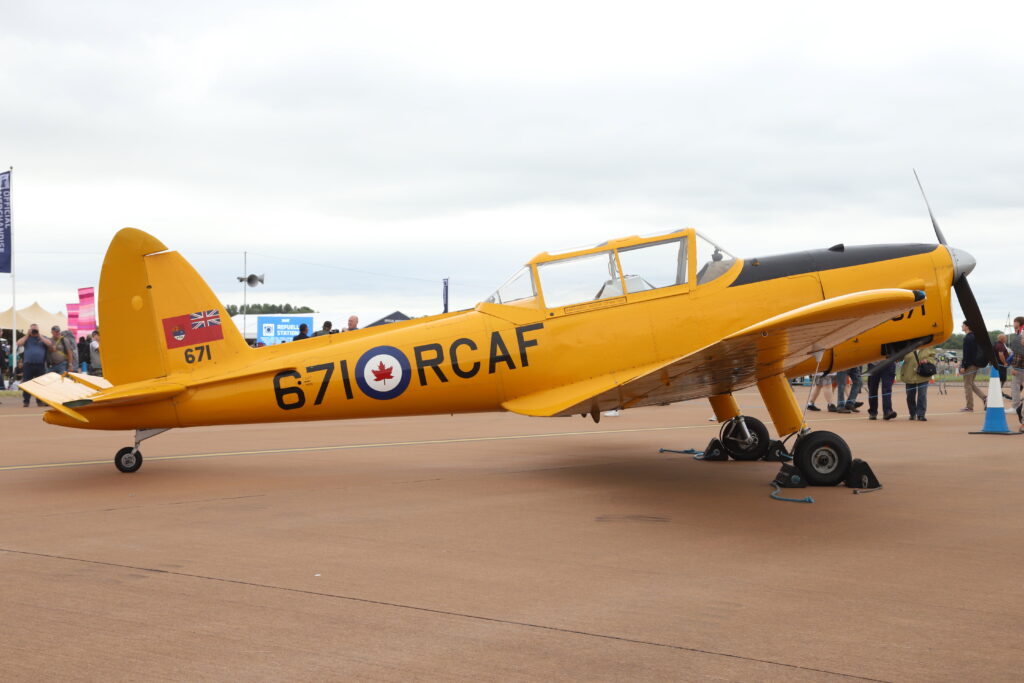
The DeHavilland Canada DHC-1 Chipmunk was one of the most numerous aircraft of the RCAF. 217 Canadian built Chipmunks served the armed forces for 23 years. It was designed as replacement for the DH.82 Tiger Moth as a primary trainer. The type was an even bigger success in Great Britain, where no less than 1.000 examples were built.
The example on show at RIAT is a former Royal Air Force one, despite the Canadian colours. The biggest difference is the canopy, which is multi-panelled while (most) Canadian built examples have a bubble canopy. However there are also numerous other internal differences, as the Canadian built examples were designed to be able to withstand the harsh Canadian climate. This aircraft is operated by the Shuttleworth Collection based at Old Warden, a collection of vintage aircraft. Here it is used for what it was designed for: teaching pilots how to fly. And more specifically in this case: how to fly a taildragger, an art in itself.
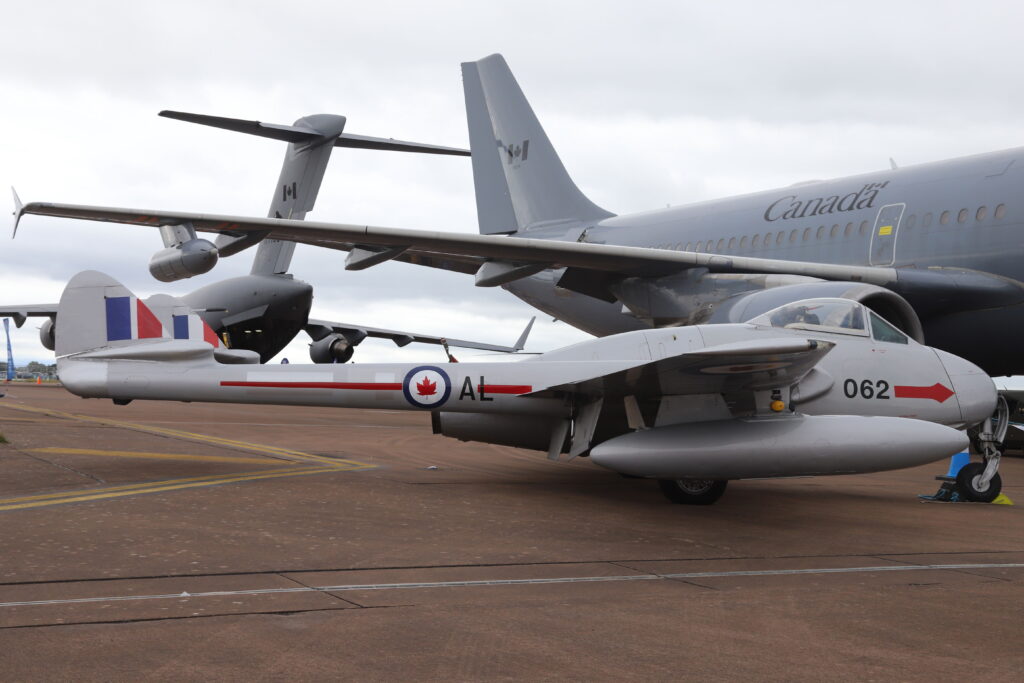
A DeHavilland Vampire was parked in front the two biggest heavies of the RCAF, the CC-177 Globemaster and the CC-150 Polaris. The aircraft is owned and operated by the Royal Norwegian Air Force Historical Squadron, and has been flying in multiple different colour schemes and markings over the years. For the occasion of the RCAF centennial celebrations it received Canadian markings, thereby forming a nice addition for the static parc. It is adorned with the markings of No. 438 (Fighter) “City of Montreal” Squadron (Auxiliary), when this was based at Montreal.
The Vampire F.3 became the first jet fighter to enter RCAF service in significant numbers, after 5 Gloster Meteors had been test flown but were never used operationally. In total 86 aircraft were operated by the RCAF from 1948 until the end of the 50’s. The relatively short service life was purely due to the quick pace of jet aircraft development at the time, it was really loved by most pilots due to its easy flying.
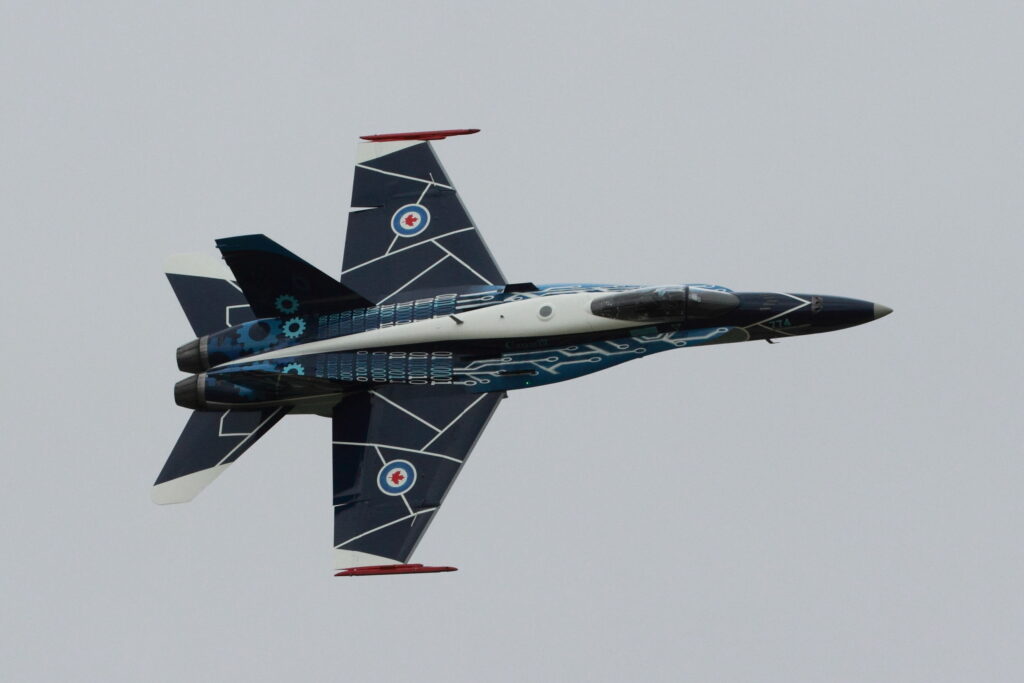
Although the formal designation is CF-188, people often refer to the Hornet in Canadian service as CF-18. That is also the designation used by the official CF-18 Demonstration Team. Their Hornet is seen here performing a very impressive display, that won the team the title of ‘best solo jet display’ at the Royal International Air Tattoo 2024. A well deserved title! And to top it off, the aircraft was also rewarded with the ‘best livery’ award.
After the show at Fairford the CF-188 was flown directly to the United States to perform again at EAA Venture 2024 at Oskosh. This Atlantic crossing was possible with help of an external fuel tank under the belly plus some air to air refuelling by the CC-150 Polaris.
This article was amongst others published in Vayu Aerospace & Defence Review
